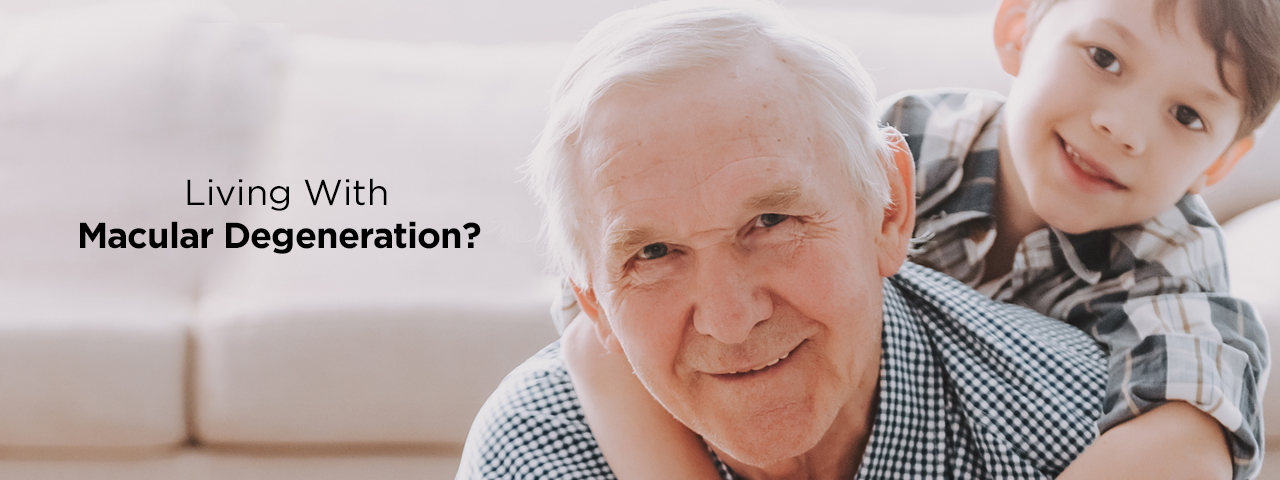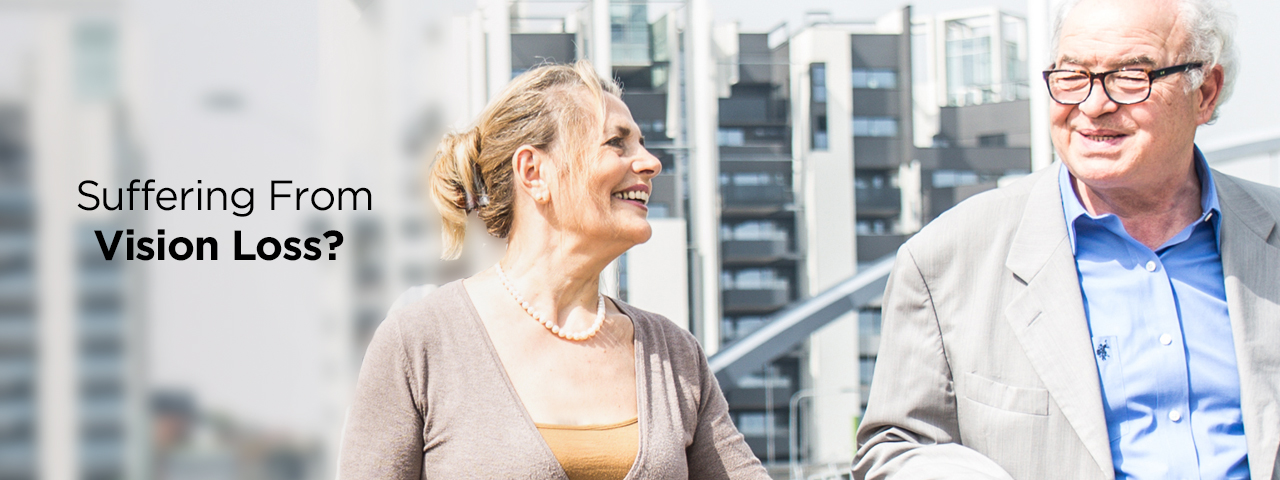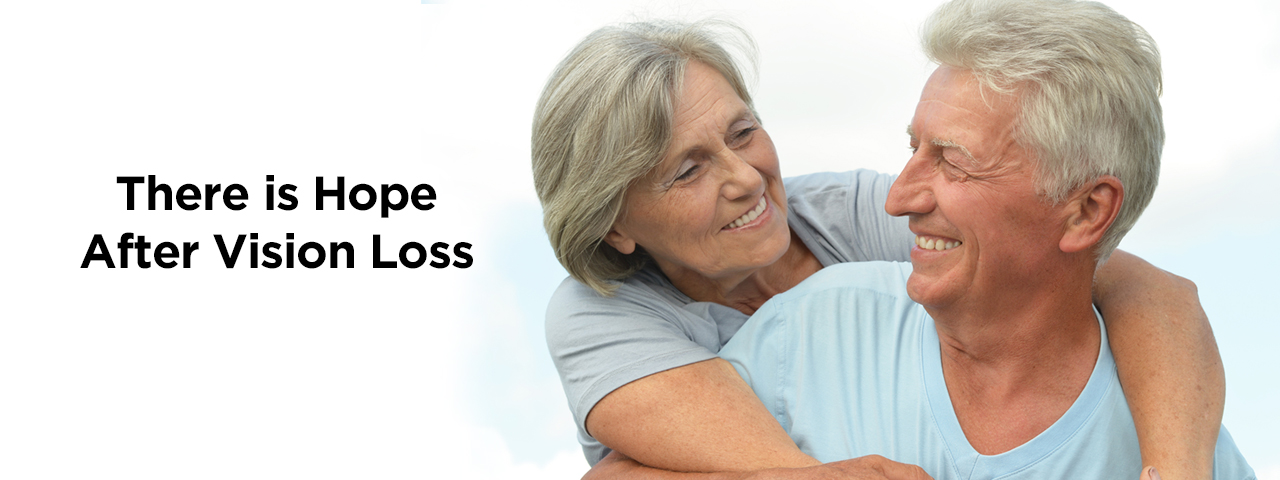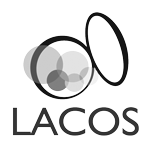Do You Suffer From Vision Loss?
Have You Been Told “Nothing More Can Be Done?”
If you or a loved one are having problems seeing and doing the things you enjoy, Dr. Ashcraft can help. If you have been told by your eye doctor that a change in your eyeglass prescription will not help you see better, call Dr. Ashcraft. He is trained to design special glasses that can make a difference.
Learn more about how Dr. Ashcraft can help you read,
drive, watch tv, see faces, and use a computer or phone.
How to Drive Safely With Bioptic Telescopic Glasses
How To See Your Phone, Tablet and Computer
How To Watch Television and Recognize Faces
How To Read Mail, Magazines, & Other Printed Material
When a Low Vision Patient is Told Nothing More Can Be Done
- Have you been told nothing more can be done for your vision?
- Are you struggling to read, see faces across the room or view television?
- Do you feel you are losing your independence by not being able to drive?
- Are you unable to do hobbies like playing cards or use the computer?
- Do you have new glasses that are not much better than you old ones?
Hi, I’m Dr. Harold Ashcraft, a low vision optometrist.
With new technology and special vision aids, I help people like you read again, see faces and television, engage in your hobbies again, and in many cases, drive.
It hasn’t always been that way.
Years ago, my own grandmother was struggling with macular degeneration and she came to me for help. She wanted to read, play the organ, and see the faces of her many grandchildren.
I was able to help her read better. But at that time, like most other optometrists, I did not know about all of the possible low vision aids and devices that could help her. I did not have samples to show her.
So, I told my grandmother what you may have been told, that nothing more could be done. I told her I couldn’t help her do the things she wanted to do, like play the organ or see faces.
I didn’t know it then, but I was wrong. Many possibilities existed for her.
If my grandmother were alive today, I would tell her that I could help her. I would show her how she could continue to do the things she loved to do.
If poor vision is holding you back from doing the things you want to do, give me a call at 888-648-9525 to set up a free consultation.
Dr. Ashcraft Helps Patient Regain Her Balance and Get Back to Living Life Normally Again.
If vision loss is stopping you from enjoying the activities of daily life such as reading, watching TV, recognizing faces, driving, or fulfilling your hobbies…
There Is Hope In Sight
Many options exist for you to live your best life with low vision.

Living with low vision can feel overwhelming and chaotic.
You may feel helpless, frustrated, depressed, dependent on others, and hopeless. Your vision loss may be taking a toll on your mental, physical, and emotional health.
If this is the case, let us share some good news.
If you are struggling with a low vision condition, there is hope. Dr. Ashcraft has devices and aids available to help you live your best life with vision loss in Ventura, CA.
This is what we’re here for.
Visiting a low vision doctor is an important first step—we can help you to live independently and to keep doing the things you enjoy.
Although your vision condition can dramatically impact your central (straight ahead) vision or side vision, there is usually some residual sight.
Special low vision aids magnify images to make them easier to see, move images to the peripheral vision or area of the retina with the best capacity to see, reduce glare, and improve contrast.
Our goal is to help you reach your goals.
Are you struggling with any of the following tasks?
- Driving
- Using a computer or smartphone
- Watching television
- Recognizing faces of family and friends
- Reading and writing
- Moving about independently
- Enjoying hobbies
Have you been told “Nothing more can be done”, or that “Your glasses cannot be made stronger”?
With the RIGHT vision aids and new technology, you may be able to resume the activities you love.
What Patients are Saying

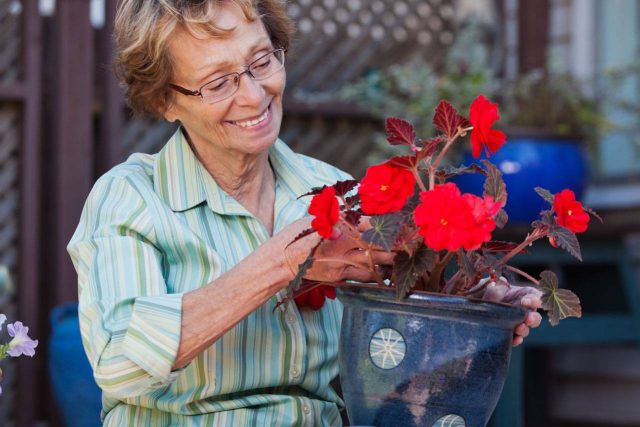
If you have been diagnosed with a low vision condition such as macular degeneration, diabetic retinopathy, glaucoma, retinitis pigmentosa, cataracts, Stardardt Disease, or albinism-related vision problem, our low vision optometrist, Dr. Harold Ashcraft, can make the most of your remaining vision by fitting you with custom low vision glasses and other aids.
These special glasses and devices are designed to help you return to your everyday activities, enjoy your hobbies again, and regain your independence.
Patients from all over Los Angeles County have come to Dr. Ashcraft with their low vision needs. He sees patients from Ventura, CA.
After 30+ years of practicing as an optometrist, Dr. Ashcraft understands how devastating and life-altering vision loss can be for an individual. That is why he is committed to helping patients live their best life and recover their day to day functioning.
If you have left an ophthalmologist’s office discouraged and thinking nothing more could be done for your sight, Dr. Ashcraft wants you to know that there ARE more options.

If you come to a low vision evaluation expecting it to be like a routine eye exam, you will be surprised. Low vision exams are very different than your yearly eye check-up.
Here are a few key distinctions:
- Time: Low vision exams are much longer than a regular eye exam. Expect to be there for at least an hour, maybe even an hour and a half.
- Special Charts: In your low vision examination, Dr. Ashcraft will use special charts to determine how much residual vision you have remaining in your central or peripheral vision. We want to maximize the vision you have.
- Wish List: One of the most important aspects of the exam will be discussing your goals and “wish list” with Dr. Ashcraft. He will want to know which activities and tasks you would most like to get back to doing. Is it reading? Driving? Recognizing faces? Watching television? By prioritizing your vision goals, Dr. Ashcraft can recommend visual solutions.
- Aids and Devices: After discussing what activities are important to you, as well as your vision condition, Dr. Ashcraft will recommend low vision aids and devices that have the right amount of magnification to help you reach your goals. You can try out these various devices yourself to see what works and what you like best. There are certain devices that you could take home that day; others will be custom made just for you. If this is your first time seeing a low vision doctor, it is likely the first time you have ever seen these types of devices.
These aids are all possible options:
Quality hand magnifiers with lights, specially designed prismatic magnifying readers, microscopic glasses, clear image magnifiers, and telescopes focused for reading distances.
If a doctor told you in the past that “nothing more can be done” for your vision loss, they likely meant that they did not have any other options to show you.
With Dr. Ashcraft’s expertise, experience, and visual recommendations, you can be back on your way to living your best life once again.
Having a low vision doctor as part of your vision team means you are getting the best vision results possible to achieve what’s important to you.
Working together with Dr. Ashcraft to reach your goals is above and beyond what you get from standard prescription glasses or a vision aids store.
Some of the low vision devices Dr. Ashcraft may recommend include:
- Macular degeneration reading glasses
- Custom telescopic low vision eyeglasses
- Bioptic telescopic driving glasses
- Custom microscope glasses
- Macular degeneration hand and stand magnifiers
- Lighting and other illumination solutions
- Electronic visual aids
- Scanners and reading machines
- Non-optical aids and devices
- Wearable technology: IrisVision, OrCam MyEye 2, eSight
Since everyone’s situation is a little different, it is important that you try these aids firsthand to see which ones will help you the most.
Glasses for Macular Degeneration in Ventura, CA

If you have central vision loss from macular degeneration, you need more magnification to see. You have most likely noticed that over-the-counter glasses or standard glasses from your eye doctor are just not strong enough. Custom designed glasses can often deliver the magnification you need to see better.
Magnifying glasses for macular degeneration can be used for many near activities: reading and writing, knitting, looking at the computer, playing cards or Bingo, painting, reading music or recipes, and viewing photographs. These special aids and devices for macular degeneration are available Ventura, CA.
Prismatic Magnifying Readers
Prismatic Magnifying Readers are a special type of magnifying glasses which can help you read better. If you suffer from macular degeneration or another sight limiting condition, prismatic magnifying glasses come in much stronger prescriptions than standard readers. You are a good candidate if you have almost equal vision in both eyes as well as a visual range of 20/40 to 20/200.
The addition of the prism can help you in two ways. It reduces eyestrain and it increases effective magnification.
ClearImage II Reading Microscopes
If you need even more magnification without giving up the quality of the image or the size of the visual field, your best visual aid might be ClearImage II Reading Microscopes. The large 40mm microscope uses a high-index thin lens to clearly magnify images from 2x to 8x its size. These lenses are used for more advanced cases of vision loss when you need a lot of magnification to see better.
We have demonstration lenses that you can try in the office. Our goal is to find the RIGHT magnification for you. Note, that is not always the MOST magnification. That is why we spend a lot of time letting you look through different types of lenses to see what works the best for you.
Watch TV, See Faces, Go to the Movies, or Theatre with
Spectacle Miniature Telescopes In Ventura, CA

If you are having trouble seeing faces across the room, watching TV or movies, or going to the theatre, Spectacle Miniature Telescope Glasses may be right for you. These small telescopes are conveniently mounted on a pair of glasses and provide magnification at a distance. Many patients like these for hobbies like playing cards or using the computer.
Reading with Spectacle Miniature Telescopes
By adding a special “reading cap” on the front of the telescope, these can be converted into a magnifying device for reading and other near tasks. Different “reading caps” go with different reading distances. For example, if you want to read at sixteen inches, you would add the sixteen inch reading cap to the system.
Bioptic Driving Telescope Glasses For Macular Degeneration, Stargardt’s Disease and other Vision Conditions in Ventura, CA
Imagine you are driving down the road. You are wearing a pair of new glasses with your best prescription. You can see the cars ahead of you, but you have a problem seeing the traffic lights and signs. You need to get very close to them before you can read them. You may be feeling nervous or worried that you don’t have enough time to stop, turn, or change lanes. You may have concerns about how safe you are for yourself and others.
Now imagine that you have the same pair of glasses, but there are two miniature telescopes mounted at the top of your glasses above your eye level. When you are looking straight ahead, you are not looking through the telescopes. You are looking through your best prescription.
Then you see a sign or traffic light up ahead. You tip your head down briefly and look through the telescope. You read the sign and then tip your head straight ahead and continue on your way.
Taking a brief look through the telescope at the top of your glasses is like taking a brief look through your rear view or side mirrors on the car. You just take a glance, then look ahead again.
Using the telescope bioptic lenses, you feel less worried and nervous and more safe and more confident while driving.
Don’t forget that in order for you to pass the Ventura DMV vision requirement for driving with low vision, your stronger eye must test better than 20/200.
Dr. Ashcraft has a lot of experience in helping people meet the California DMV vision requirements to drive safely with bioptic telescope driving lenses. If you would like to drive again safely and think bioptic telescope lenses might be the answer for you, give Dr. Harold Ashcraft a call at 888-648-9525 to discuss your situation with him. The phone consultation is free.
Wearable Technology
Technological advancements in the form of wearable low vision aids have made of world of difference for people living with reduced vision. Some of these low vision devices include IrisVision, OrCam MyEye 2, and eSight. Call Dr. Ashcraft at 888-648-9525 to see if these are for you.
Low Vision Causes
When an eye disease or other cause reduces your vision and prevents you from doing those tasks you need or want to do, even with refractive correction, this is referred to as low vision. Listed below are eye diseases and conditions that typically cause low vision:
- Macular Degeneration (wet or dry)
- Juvenile Macular Degeneration – Stargardt Disease/Best Disease/Juvenile Retinoschisis
- Diabetic Retinopathy
- Retinitis Pigmentosa
- Albinism and other vision-limiting diseases
- Glaucoma
- Cataracts
- Stroke-Hemianopsia
- Achromatopsia
- Macular hole
- Nystagmus
- Fuchs Dystrophy
- Rod Cone Dystrophy
- Optic Atrophy
- Histoplasmosis Retinopathy
- Pathological Myopia
Meet Our Low Vision Ventura Doctor
Dr. Ashcraft is committed to helping low vision and partially sighted patients of all ages do the visual tasks they most want to do such as reading, seeing faces, watching television, driving, playing cards, writing and enjoying theatre. Common conditions that Dr. Ashcraft helps with are macular degeneration, diabetic eye disease, glaucoma, cataracts, albinism and Stargardt Disease.
Dr. Ashcraft received special post-doctoral training in Low Vision with renowned Low Vision Diplomat Dr. Richard Shuldiner, O.D., F.A.A.O. and is a Fellow of the International Academy of Low Vision Specialists, an elite group of low vision doctors. Dr. Ashcraft did an internship at the Center for the Partially Sighted. Since they have recently closed, Dr. Ashcraft has seen many patients who previously received low vision services at the Center for the Partially Sighted
Dr. Ashcraft and his wife Kelly have seven children and twelve grandchildren with more to come. He enjoys spending time with his family, traveling, reading, and is interested in just about everything.
Low Vision FAQ
1. What is low vision?
Low vision is impaired vision that cannot be corrected with traditional glasses, contacts lenses, or surgery.
2. What causes low vision?
Common causes of low vision are age-related macular degeneration, inoperable cataracts, glaucoma, juvenile macular degeneration, Stargardt Disease, diabetic retinopathy, albinism, vision loss after a stroke, and Retinitis Pigmentosa.
3. Can a person with low vision drive in California?
In California, people with low vision (mild to moderate central vision loss, but with good side vision) are permitted to drive, often with the help of bioptic telescopes. Many patients with Macular Degeneration and Stargardt’s Disease and other vision conditions drive safely with Bioptic Telescopic Glasses
4. What are low vision aids and devices?
Low vision aids are special devices that provide significantly more magnification than standard glasses, which enable people to see better. These aids include magnifiers, strong magnifying reading glasses, microscope lenses, telescopic lenses, E-scoop magnifying glasses, and electronic or digital magnifying devices.
5. What are macular degeneration glasses?
Macular degeneration glasses are special glasses that have the right amount of magnification to help people with macular degeneration read and do other near tasks.
Serving patients from the following areas: Camarillo, Fillmore, Moorpark, Ojai, Oxnard, Port Hueneme, Santa Paula, Simi Valley, Thousand Oaks, and Ventura, CA
Ventura California Highlights
The City of San Buenaventura, or Ventura as it is more commonly known, is nestled between two wide open rivers and has been occupied for thousands of years by European travelers. Other cities that are close to Ventura include Oxnard, Simi Valley, Camarillo, Santa Paula, and Moorpark.
One of the most popular places to visit in Ventura is the Mission San Buenaventura. The Mission San Buenaventura is a Catholic district that was founded in 1782. On June 9, 2020, Pope Francis declared the San Buenaventura church to be a small basilica. Other attractions include the Ventura Pier and Promenade where there are small retail stores and places to fish and the Ventura Lighthouse.
Many well-known companies including Patagonia, Stewart+Brown, and TheBarna Group are based in Ventura.
